Group members and other users can read and execute, but cannot writeThe chmod command A normal consequence of applying strict file permissions, and sometimes a nuisance, is that access rights will need to be changed for all kinds of reasons We use the chmod command to do this, and eventually to chmod has become an almost acceptable English verb, meaning the changing of the access mode of a fileChmod never changes the permissions of symbolic links;

Unix Permissions The Easy Way Index Of All Chmod Permutations By Semi Koen Towards Data Science
Chmod calculator
Chmod calculator-Examples The sticky bit can be set using the chmod command and can be set using its octal mode 1000 or by its symbol t (s is already used by the setuid bit) For example, to add the bit on the directory /usr/local/tmp, one would type chmod t /usr/local/tmpOr, to make sure that directory has standard tmp permissions, one could also type chmod 1777 /usr/local/tmpGNU chmod will assume the mode you're giving it is octal anyway, but it's safest to prepend the zero Finally, if you see a at the end of the modestringrwxrxrx then that means the file has extended permissions, and you'll need more than chmod



Chmod X Explained Everything You Need To Know
It is common to use the basic chmod command to change the permission of a single file However, you may need to modify the permission recursively for all files within a directory In such cases, the chmod recursive option (R or recursive) sets the permission for a directory (and the files it contains) The syntax for changing the file permission recursively isSee the docs for chmod() for possible values of mode As of Python 33, this is equivalent to oschmod(fd, mode) Raises an auditing event oschmod with arguments path, mode, dir_fd Availability Unix osfchown (fd, uid, gid) ¶ Change the owner and group id of the file given by fd to the numeric uid and gid To leave one of the ids unchangedChmod is a Linux command that will let you \set permissions\ (aka, assign who can read/write/execute) on a file Code chmod permissions file Code chmod permission1_permission2_permission3 file When using chmod, you need to be aware that there are three types of Linux users that you are setting permissions for Therefore, when
The chmod command is used to change the various permission bits of a file or directory The command takes the general form chmod MODE file There are two ways to represent the MODE Using symbolic modes (letters to indicate the categories and permission)The chmod command is used to change the various permission bits of a file or directory The command takes the general form chmod MODE file There are two ways to represent the MODE Using symbolic modes (letters to indicate the categories and permission)Chmod clears the setgroupID bit of a regular file if the file's group ID does not match the user's effective group ID or one of the user's supplementary group IDs, unless the user has appropriate privileges Additional restrictions may cause the setuserID and setgroupID bits of MODE or RFILE to be ignored
Chmod gowx mydir This denies group members and others the permission to create or delete files in mydir (gow) and allows group members and others to search mydir or use it in a path name (gox) This is equivalent to the command sequence chmod gw mydir chmod ow mydir chmod gx mydir chmod ox mydirChmod ux file1 To remove the write permission for others for file2 chmod ow file2 You can combine multiple references and modes to set the desired access all at once For example, to explicitly make file3 readable and executable to everyone chmod ugo=rx file3 The all (a) mode is the same as ugo, allowing the previous command to be$ chmod 755 R directory_name $ chmod 755 R /home/linuxtechi/data Example 3) Assign permissions using text notation Another way of assigning permissions is by using the text notation In this method, the chmod command takes flags or symbols which represent the owner, group, others or all users ( u, g , and o) in the syntax



How Do You Chmod On Osx Macrumors Forums



Title Of Folders With Chmod 777 Is Not Readable Issue 36 Hukl Smyck Color Scheme Github
The chmod command A normal consequence of applying strict file permissions, and sometimes a nuisance, is that access rights will need to be changed for all kinds of reasons We use the chmod command to do this, and eventually to chmod has become an almost acceptable English verb, meaning the changing of the access mode of a fileChmod OPTION reference=RFILE FILE Frequently used optionsR, recursive change files and directories recursivelyc, changes like verbose but report only when a change is madev, verbose output a diagnostic for every file processed BasicsWe can sort it as a user, group and other from left to right, which comes in 3 blocks after the first character
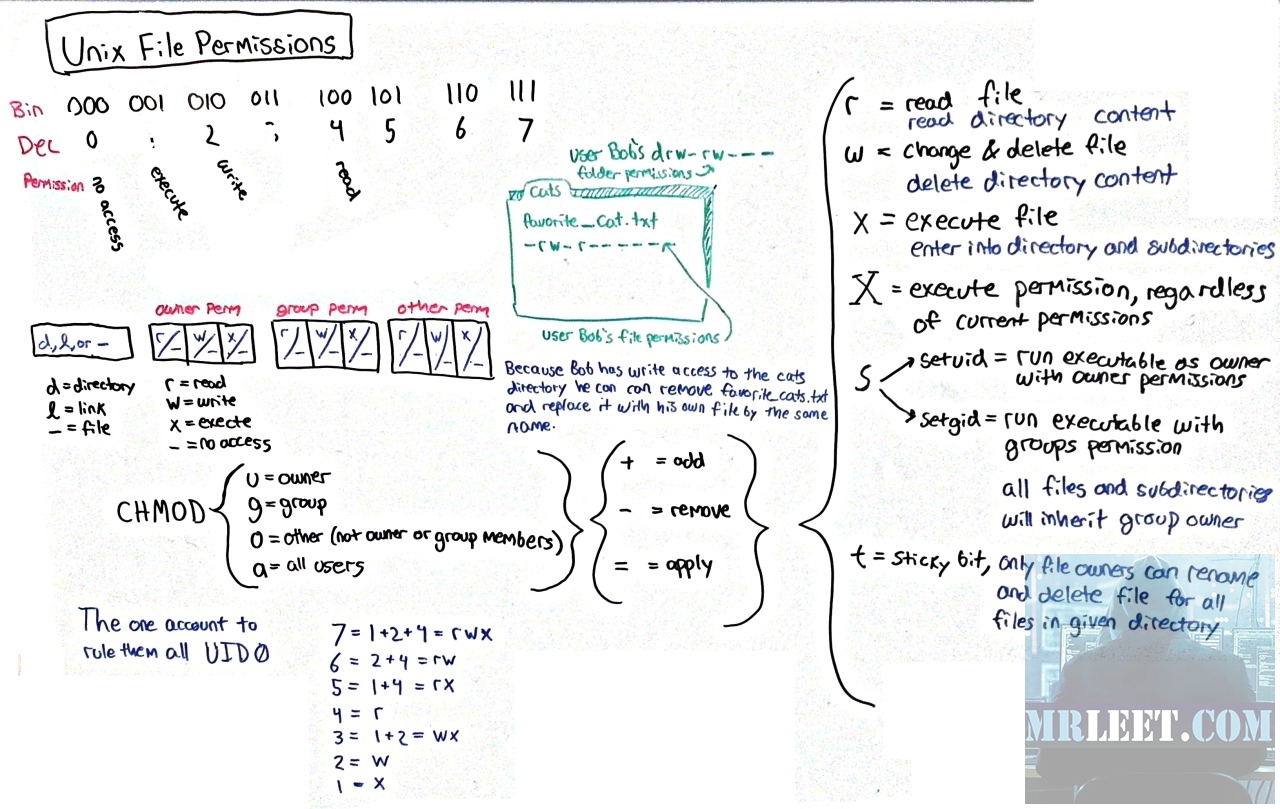


Linux File Permissions And Chmod Mrleet



Permissions And Ownership Chown Chmod On Redhat Linux Using Vmware Workstation Vmware Workstation Linux Youtube
Chmod R or *page Numerical Shorthand Another way to use chmod is to provide the permissions you wish to give to the owner, group, and others as a threedigit number The leftmost digit represents the permissions for the ownerChmod changes the permissions of each given file according to mode, which can be either an octal number representing the bit pattern for the new permissions or a symbolic representation of changes to make, (= rwxXstugoa) Numeric (absolute) mode From one to four octal digits Any omitted digits are assumed to be leading zerosThe chmod command changes the access permissions of files and folders The chmod command, like other commands, can be executed from the command line or through a script file If you need to list a file's permissions, use the ls command Mykyta Dolmatov / Getty Images



Explaining The Difference Chmod X And Chmod A X Youtube



Linux Commands 5 File Permission Chmod Youtube
Our chmod calculator generates file permissions for owner, group, and the public in number (744) and symbolic (rwxrr) notation formats What is Chmod?Description Python method chmod() changes the mode of path to the passed numeric modeThe mode may take one of the following values or bitwise ORed combinations of them − statS_ISUID − Set user ID on execution statS_ISGID − Set group ID on execution statS_ENFMT − Record locking enforced statS_ISVTX − Save text image after execution statS_IREAD − Read by ownerOthers can read only" chmod R 755 myfiles Recursively (R) Change the permissions of the directory myfiles, and all folders and files it contains, to mode 755 User can read, write, and execute;



I Need Help In Laravel 5 4 Permission Denied Stack Overflow



Devrant A Fun Community For Developers To Connect Over Code Tech Life As A Programmer
Chmod 444 file Allow read permission to owner and group and world chmod 777 file Allow everyone to read, write, and execute file Symbolic Mode The format of a symbolic mode is a combination of the letters = rwxXstugoa Multiple symbolic operations can be given, separated by commasThe difference is what permissions get set and which mode you use to set them With chmod x you set the executable bit for all the owner, the owner group, and the other users This is known as symbolic mode To quote the man chmod The operator causes the selected file mode bits to be added to the existing file mode bits of each file;The chmod command is used in Linux (and Unixlike systems) to set the permissions of files and directories First of all, here is the generic syntax of the chmod command chmod The permission part of the command can have different formats



Chmod Chown Chmown To Say Chmod Chown Chgrp Would Be By Tim Chambers Medium



Chmod Permission On Bash Install Issue 38 Sdrausty Termux Archlinux Github
For recursive chmod'ing both files and directories in one step you can use the function below Note that this function has one argument for directory permissions and one for file permissions In this way you can apply the 'x' permission on directories, and skip it on directoriesThe chmod command is used in Linux (and Unixlike systems) to set the permissions of files and directories First of all, here is the generic syntax of the chmod command chmod The permission part of the command can have different formatsChmod stands for change mode and it is used to change the file or directory access permission in Linux, Unix systems File access permissions can be represented in numeric and symbolic formats



How To Fix Chmod 777 Wpscan Rb Chmod Cannot Access Wpscan Rb No Such File Or Directory



How To Use The Terminal Chmod Command Demystified And Put To Use Youtube
Examples chmod 644 filehtm Set the permissions of filehtm to "owner can read and write;$ chmod 0 sampletxt Write by anyone $ chmod 002 sampletxt Execute by owner only $ chmod 100 sampletxt Execute by group only $ chmod 010 sampletxt Execute by anyone $ chmod 001 sampletxt Allow read permission to owner and group and anyone $ chmod 444 sampletxt Allow everyone to read, write, and execute file $ chmod 777 sampletxtA superuser or the file owner can use a chmod command or chmod() function to change two options for an executable file The options are set in two file mode bits SetuserID (S_ISUID) with the setuid option SetgroupID (S_ISGID) with the setgid option
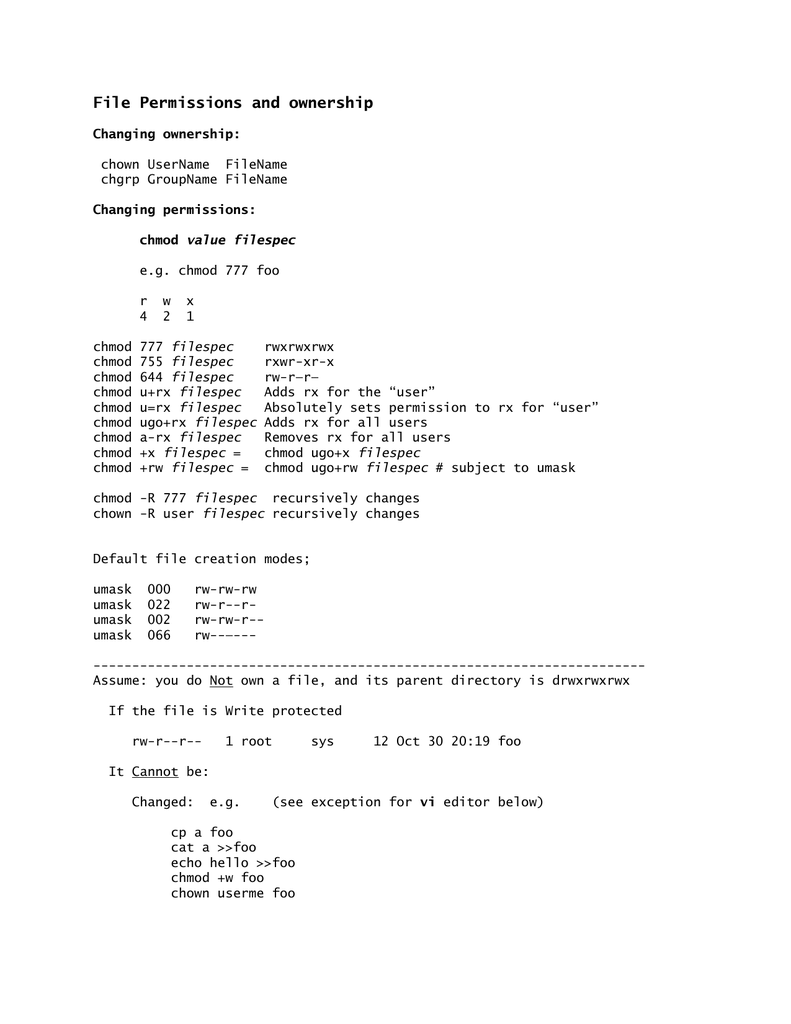


File Permissions And Ownership
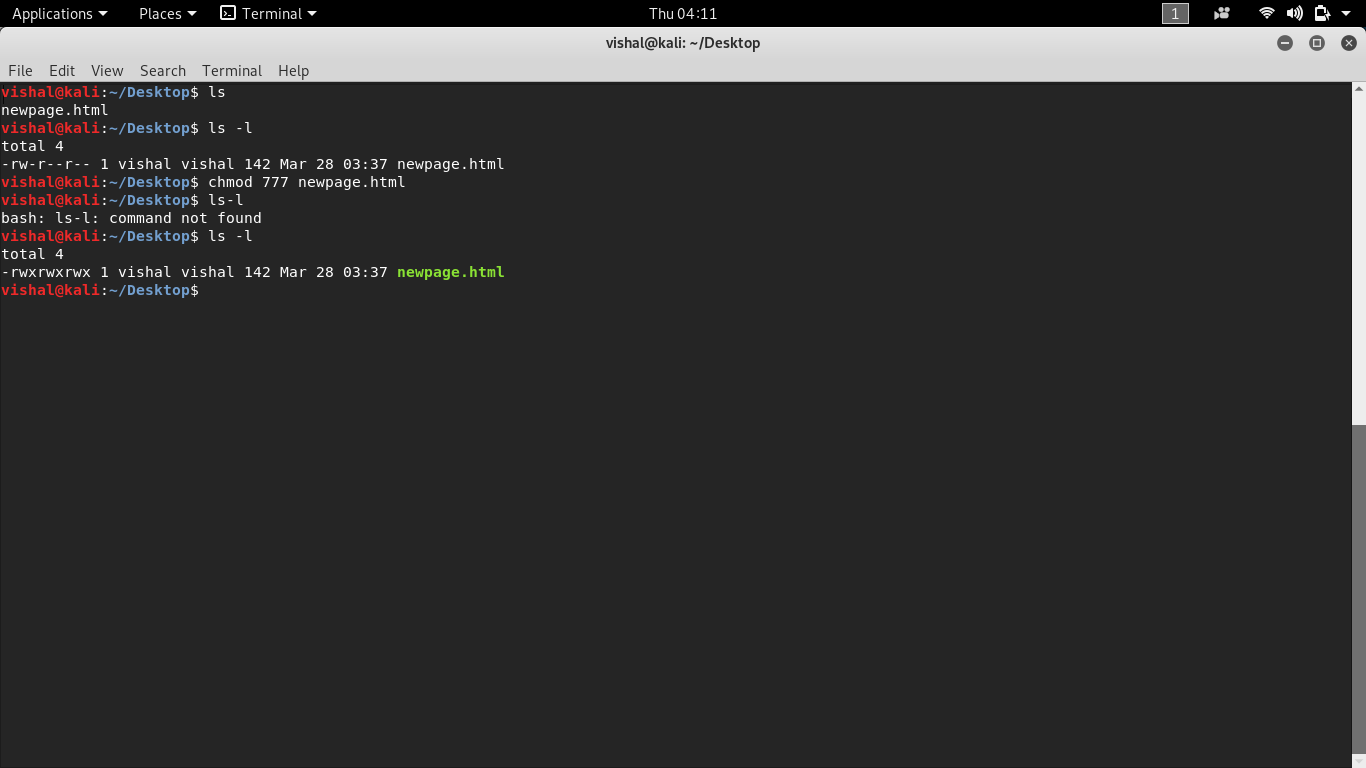


Unix Commands Basic To Advanced Unix Commands With Example
The chmod system call cannot change their permissions This is not a problem since the permissions of symbolic links are never used However, for each symbolic link listed on the command line, chmod changes the permissions of the pointedto fileChmod never changes the permissions of symbolic links;# chmod LIST Changes the permissions of a list of files The first element of the list must be the numeric mode, which should probably be an octal number, and which definitely should not be a string of octal digits 0644 is okay, but "0644" is not Returns the number of files successfully changed See also oct if all you have is a string



Explained How To Use Chmod Command Complete Guide Youtube



D 6 Permission Issues And How To Troubleshoot Engineering Libretexts
Chmod changes the file mode bits of each given file according to mode, which can be either a symbolic representation of changes to make, or an octal number representing the bit pattern for the new mode bitsView (u)ser, (g)roup and (o)thers permissions for chmod 750 (chmod arwx,gw,orwx) or use free online chmod calculator to modify permissions easilyThe chmod system call cannot change their permissions This is not a problem since the permissions of symbolic links are never used However, for each symbolic link listed on the command line, chmod changes the permissions of the pointedto file



When Sudo Chmod 755 Library Tomcat9 Bin Sh Occurred An Error Stack Overflow



Basics Of Using Chown And Chmod Commands Anto Online
Description Python method chmod() changes the mode of path to the passed numeric modeThe mode may take one of the following values or bitwise ORed combinations of them − statS_ISUID − Set user ID on execution statS_ISGID − Set group ID on execution statS_ENFMT − Record locking enforced statS_ISVTX − Save text image after execution statS_IREAD − Read by ownerIn Linux systems, "chmod" command is used to determine the access rights of users to filesIt allows us to change the access permissions of the files we specify The exact equivalent of chmod is change mode When we examine the example below;To only change directory permissions



Permission Assignment Nobody Other Than Owner Can Read The File Automated Hands On Cloudxlab



How To Run Unix Shell Command In Java Like Chmod Mkdir Grep Or Any Unix Commands Javaprogramto Com
Chmod 777 / path / to / file Hopefully, this article helped you better understand file permissions in Unix systems and the origin of the magical number "777" Now that you've mastered file permissions, you may want to learn how to copy and paste text, files and folders in the Linux terminal or use sticky bit to manage files on sharedThe chmod command with the R options allows you to recursively change the file's permissions To recursively set permissions of files based on their type, use chmod in combination with the find command If you have any questions or feedback, feel free to leave a commentAnd = causes them to be



Permissions And Executables A Primer For Computational Biology



Bash Chmod U X Problem In Case Statement In Shell Script Ask Ubuntu
View (u)ser, (g)roup and (o)thers permissions for chmod 750 (chmod arwx,gw,orwx) or use free online chmod calculator to modify permissions easilyThe chmod() function shall change S_ISUID, S_ISGID, S_ISVTX, and the file permission bits of the file named by the pathname pointed to by the path argument to the corresponding bits in the mode argument The application shall ensure that the effective user ID of the process matches the owner of the file or the process has appropriate privileges in order to do thisExample chmod 751 tech chmod u=rwx, g=rx, o=x tech chmod =r tech * Please note that there are many flavors of UNIX, so if in doubt, consult your man pages



Chmod File Permissions In Linux Unix Linux Angular Angular Js Jquery Php Mysql And Web Development Tutorials


Chown Chmod
3 chmod examples Syntax and Options Related Commands chmod stands for change mode, which changes the file or directory mode bits To put it simply, use chmod command to change the file or directory permissions Following is a sample of ls l command output In this, the 9 characters from 2nd toChmod 755 Only owner can write, read and execute for everyone This next command will set the following permission on file rwxrxrx Only the owner will be allowed to write to the file Owner, group members and everyone else will have read and execute permission chmod 755 /path/to/fileCauses them to be removed;



Chmod 600



Managing File Permissions And Ownerships Network Engineer
Chmod OPTION reference=RFILE FILE Frequently used optionsR, recursive change files and directories recursivelyc, changes like verbose but report only when a change is madev, verbose output a diagnostic for every file processed BasicsIn Unix and Unixlike operating systems, chmod is the command and system call which is used to change the access permissions of file system objects (files and directories)It is also used to change special mode flags The request is filtered by the umaskThe name is an abbreviation of change mode Modes are the filesystem permissions given to "user", "group" and "others" classes to accessYou are trying to fix a permission issue with your web server and found information on the Internet, saying that you need to recursively chmod 777 the web directory Before doing that, make sure you understand what does chmod R 777 do, and why you should never set permissions to 777 This article explains the basic Linux permissions model and what the numbers corresponding to the permissions



Unix Permissions The Easy Way Index Of All Chmod Permutations By Semi Koen Towards Data Science
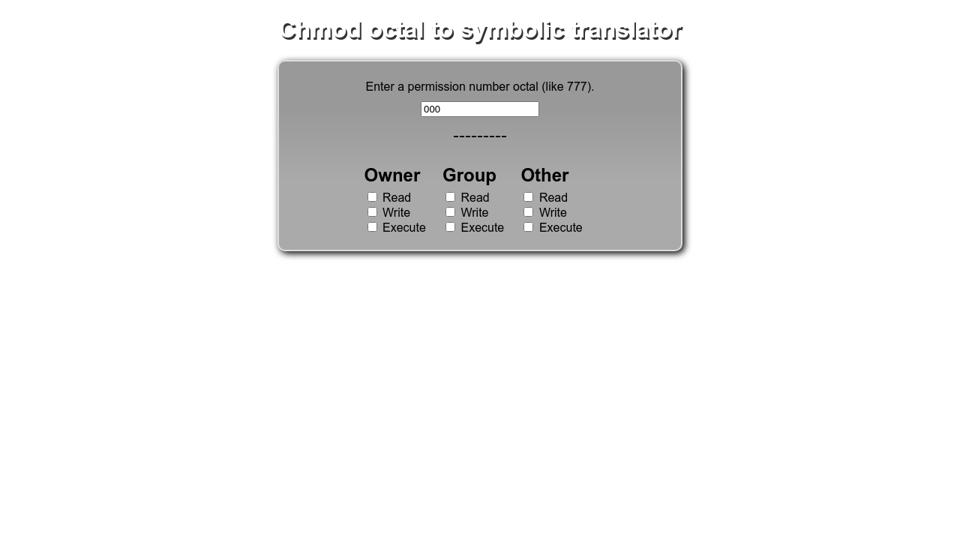


Chmod Calculators On Codepen
Chmod clears the setgroupID bit of a regular file if the file's group ID does not match the user's effective group ID or one of the user's supplementary group IDs, unless the user has appropriate privileges Additional restrictions may cause the setuserID and setgroupID bits of MODE or RFILE to be ignored ThisThese should be 644, as they often do not need to be executableHence, you could do find /path/to/directory type d exec chmod 755 {} \;The chmod command allows you to change the permissions on a file using either a symbolic or numeric mode or a reference file We will explain the modes in more detail later in this article The command can accept one or more files and/or directories separated by space as arguments



How To Chmod Recursively In Linux Youtube



How To Use The Chmod Command In Linux Technotrending
Please refer to the manual (man chmod)R, recursive change files and directories recursively chmod R 755 /path/to/directory would perform what you want However You don't usually want to 755 all files;Chmod rwx filename to add permissions chmod rwx directoryname to remove permissions chmod x filename to allow executable permissions chmod wx filename to take out write and executable permissions Note that "r" is for read, "w" is for write, and "x" is for execute This only changes the permissions for the owner of the fileIn Unix and Unixlike operating systems, chmod is the command and system call which is used to change the access permissions of file system objects (files and directories)It is also used to change special mode flags The request is filtered by the umaskThe name is an abbreviation of change mode Modes are the filesystem permissions given to "user", "group" and "others" classes to access



Chmod X Explained Everything You Need To Know



Chmod 755 Livecoding Foxdot Python Youtube
Chmod gowx mydir This denies group members and others the permission to create or delete files in mydir (gow) and allows group members and others to search mydir or use it in a path name (gox) This is equivalent to the command sequence chmod gw mydir chmod ow mydir chmod gx mydir chmod ox mydirGroup can read only;
/GettyImages-1021092796-ea8c63ee76f84bd5bf98c4222337fbb4.jpg)


How To Use The Chmod Command In Linux



Sticky Bit In Linux


Give Write Access Chmod 775


Chmod Github Topics Github
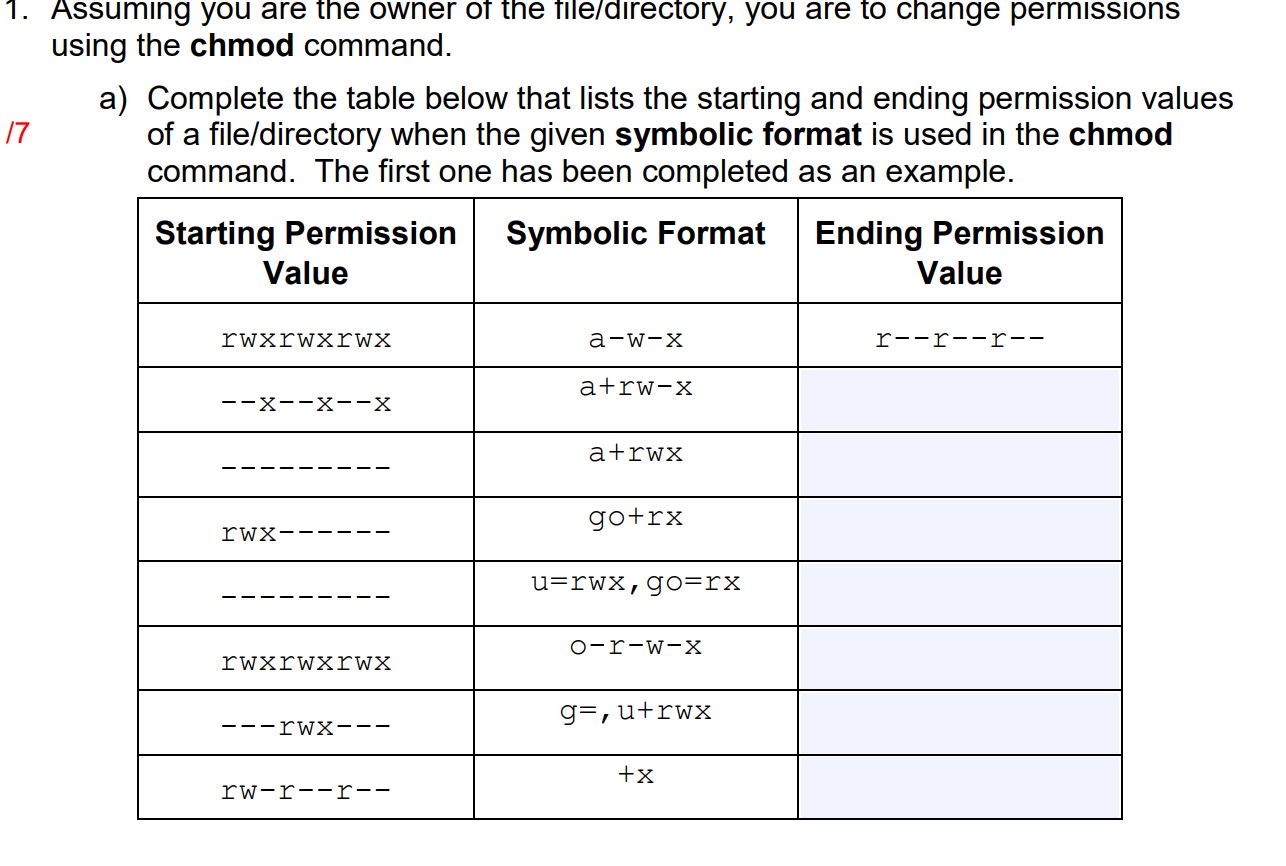


Solved 1 Assuming You Are The Owner Of The File Director Chegg Com


Chmod X Windows Nativeyellow
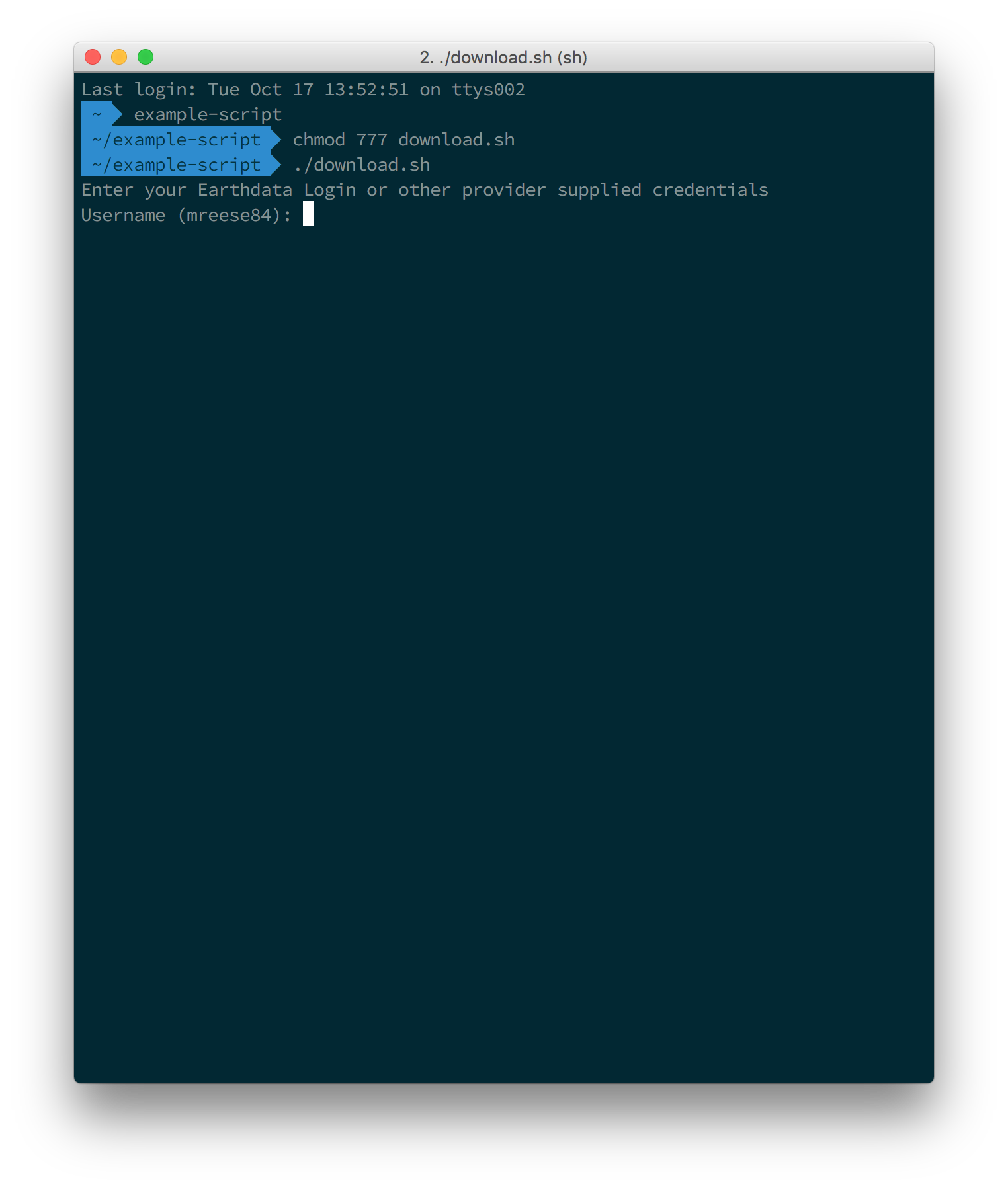


How To Use The Download Access Script Earthdata Search Earthdata Wiki
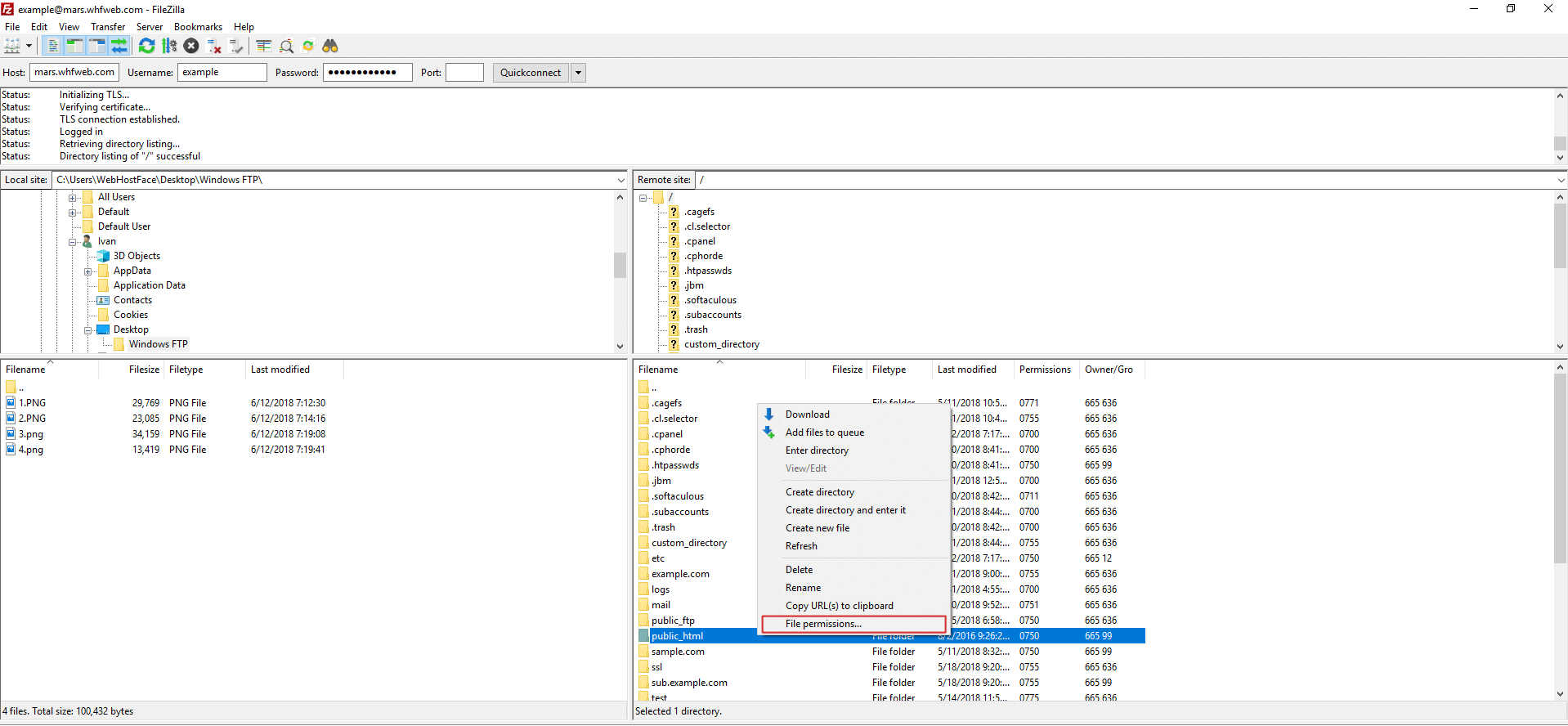


Change Ftp Permissions With Filezilla On Windows Computer



Chmod 755 Command What Does It Do Codefather



Linux For Programmers File Permissions And Chmod
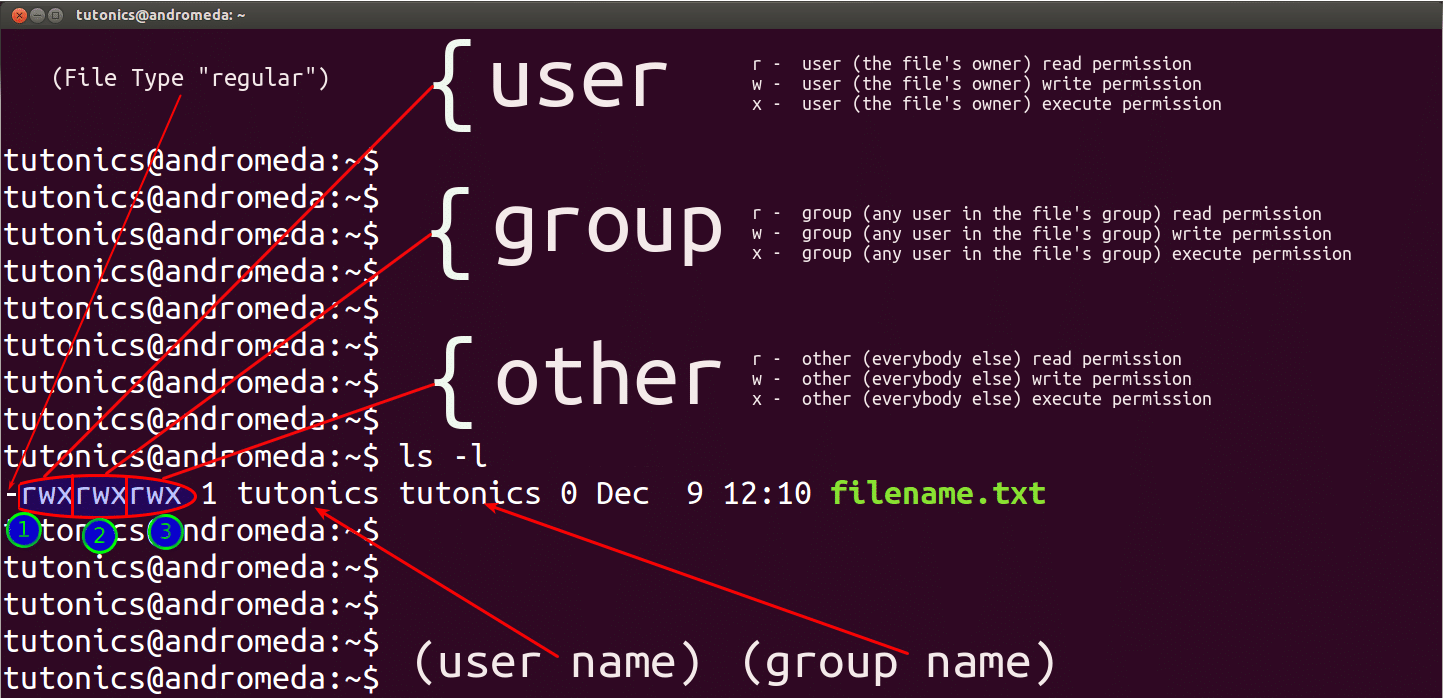


Linux File Permissions Tutorial For Beginners



Linux Terminal File Permissions Chmod Chown And Chgrp Linux Line Tools Thing 1
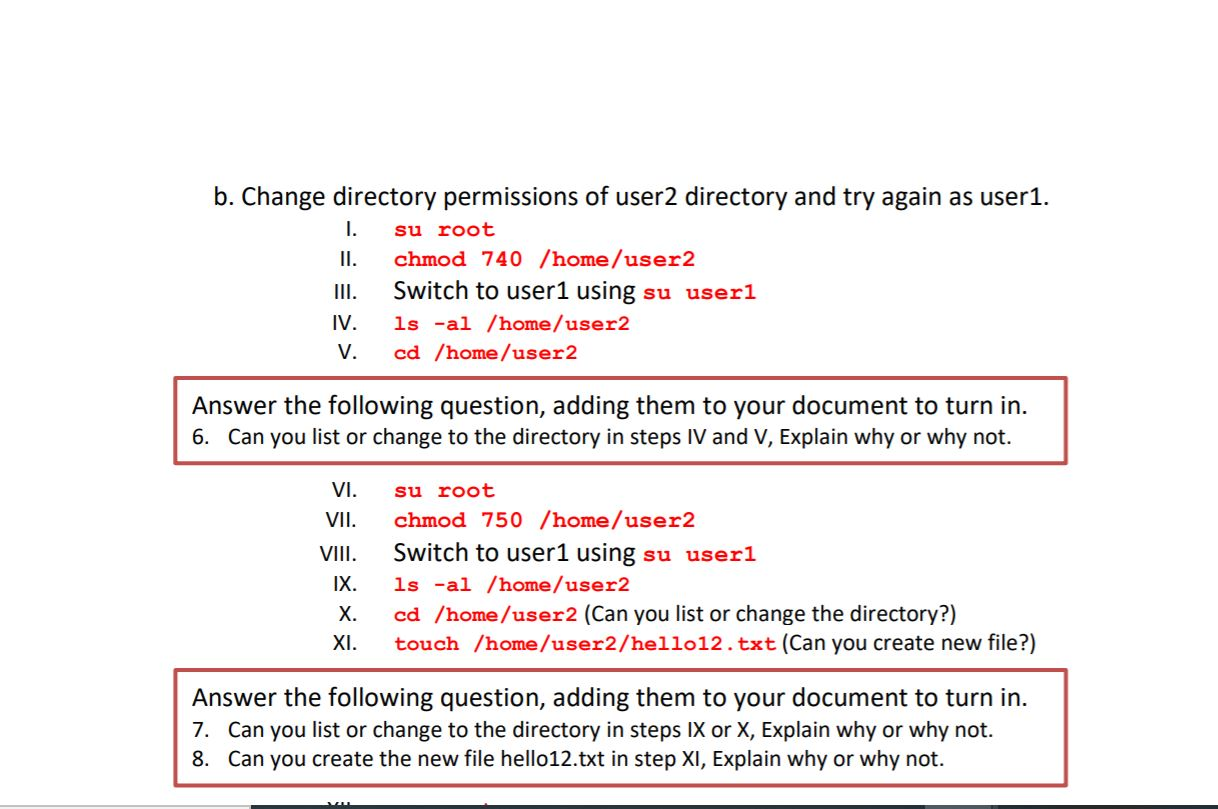


Solved B Change Directory Permissions Of User2 Directory Chegg Com



Chmod Directories And Files Problem Hosting Support Infinityfree Forum



Chmod 777 What Does It Really Mean Make Tech Easier



Slides Show
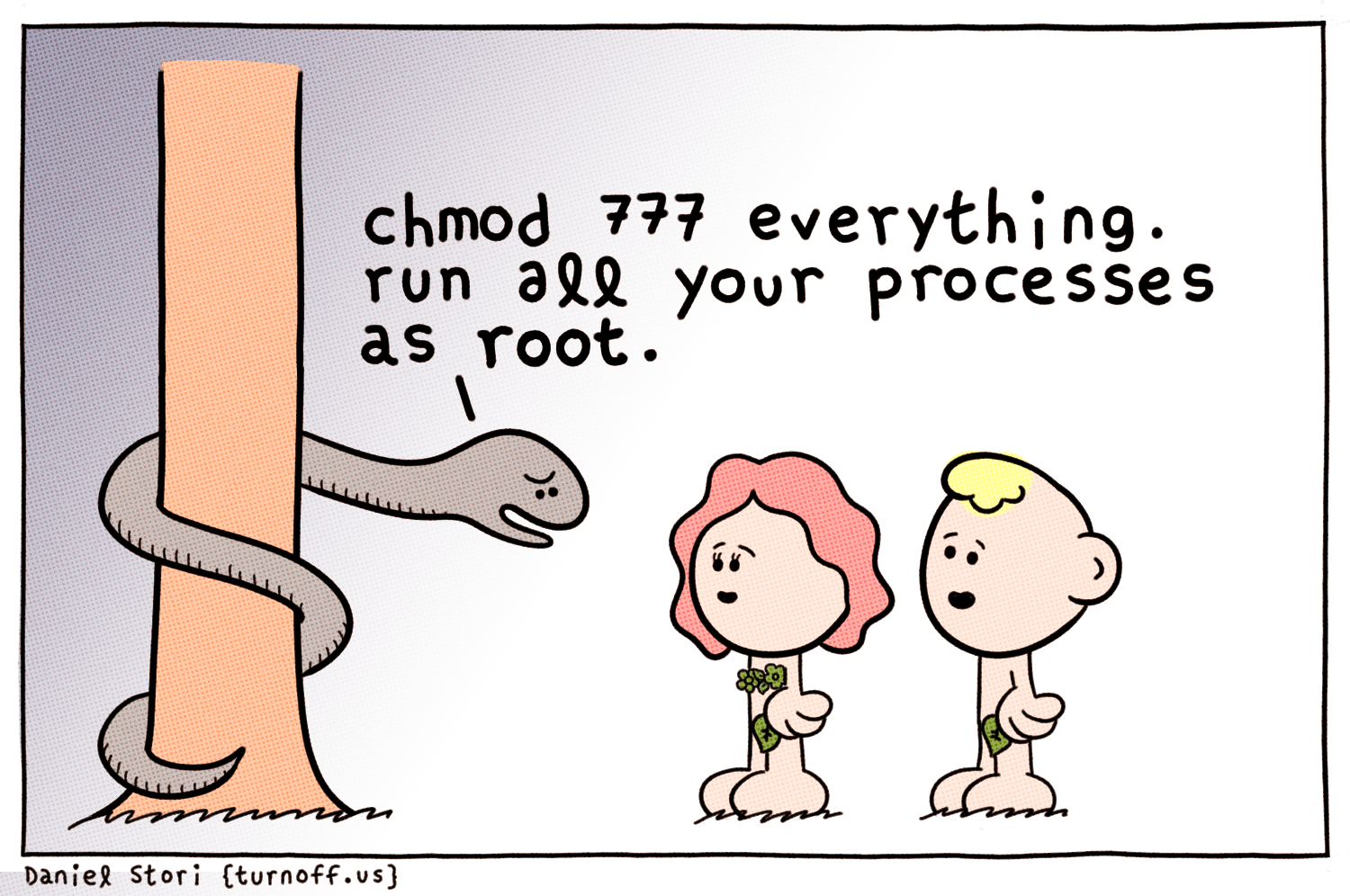


Chmod 777 Comic Dzone Security
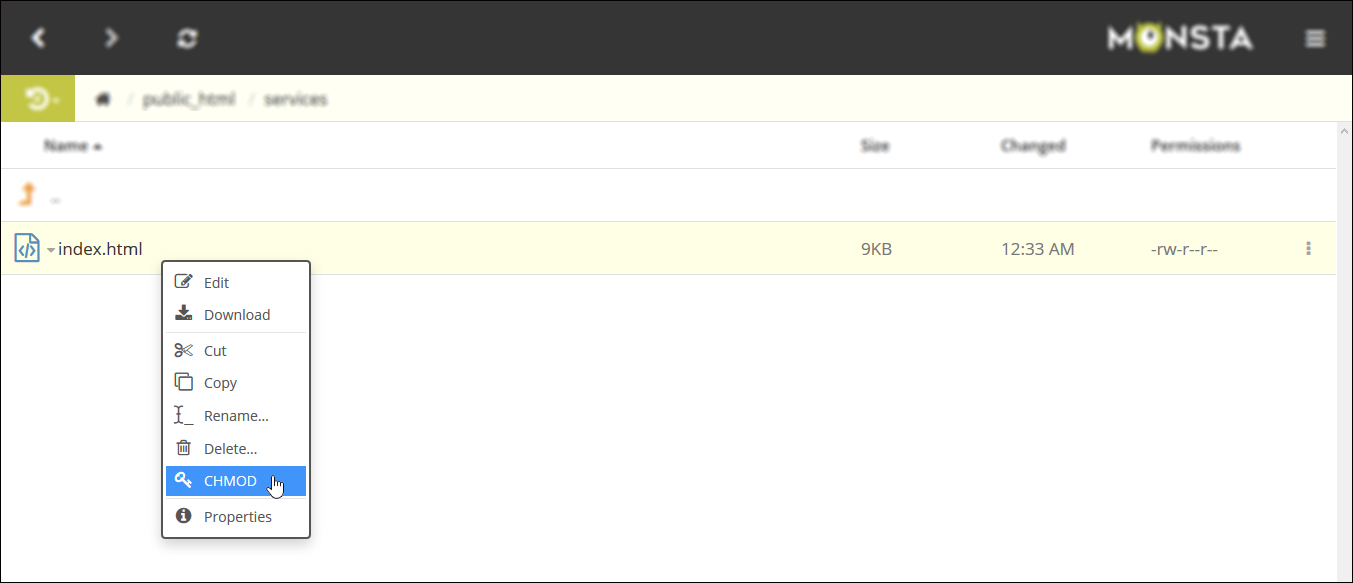


How To Change Permissions Chmod Monsta Ftp Monsta Ftp
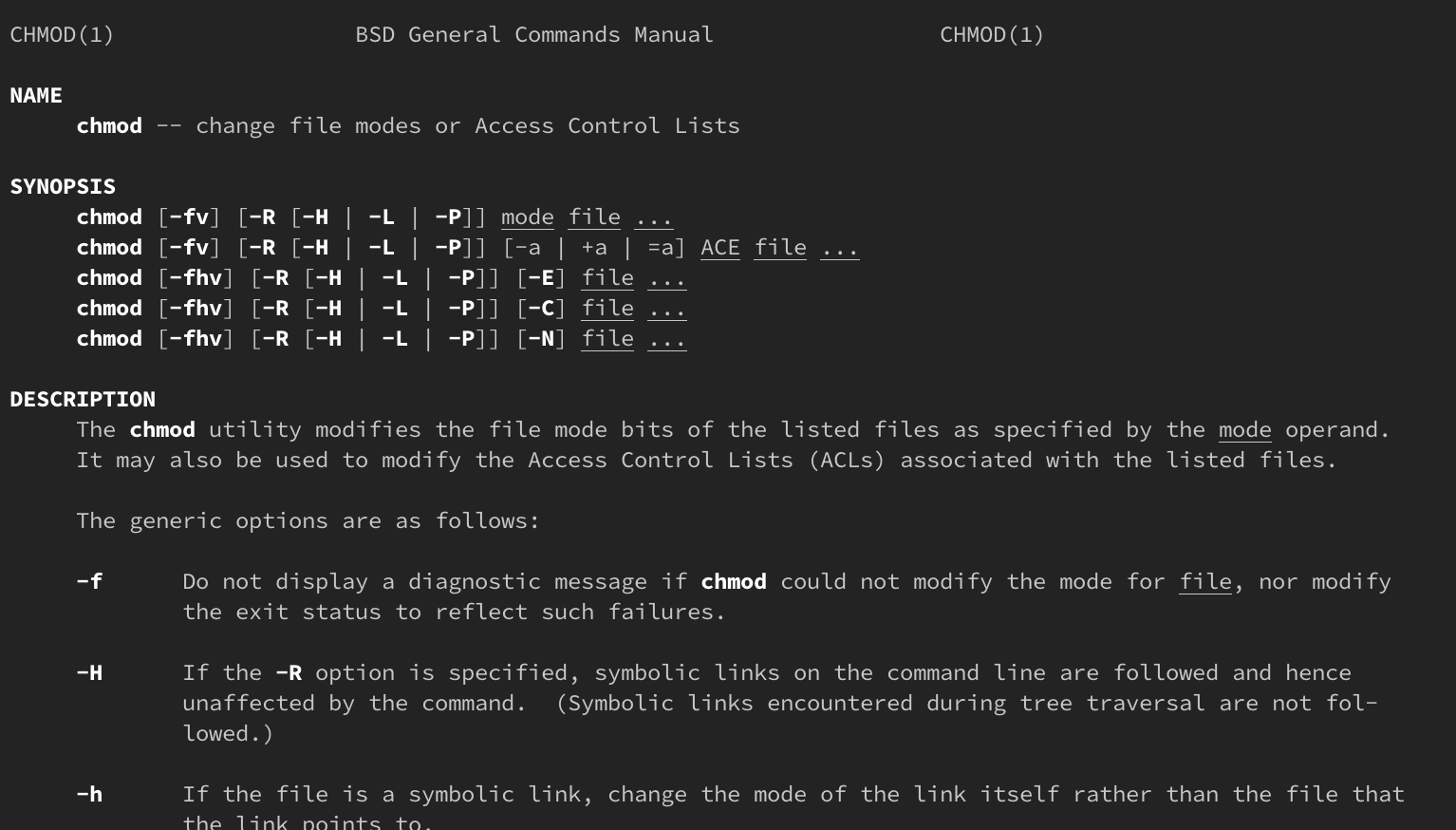


How Do Linux Permissions Work



Chmod Antlersea Flickr
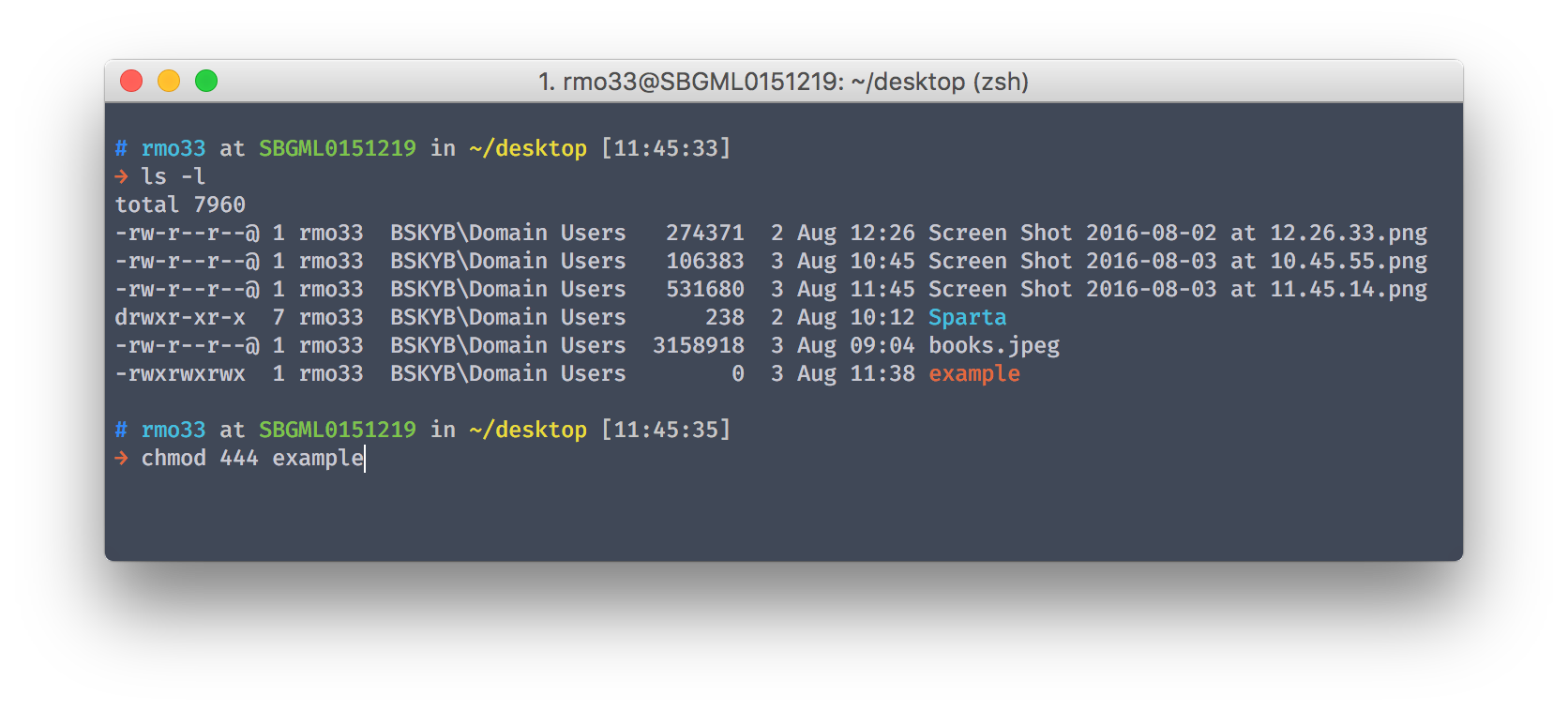


Chmod Tutorial This Is A Quick Alternative Tutorial On By Ryan Morrison Medium
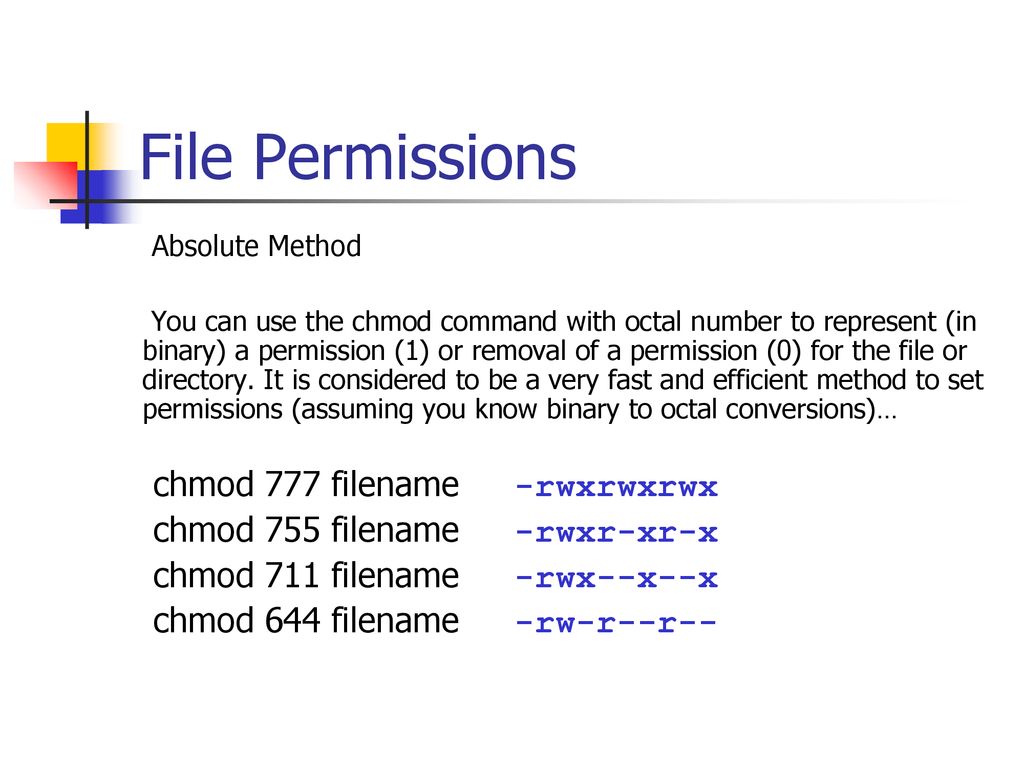


Bif703 File Permissions Ppt Download


Set Permissions On Files Directories Using Chmod In Ubuntu Techpiezo



How To Use Chmod Command In Linux Explained With Examples



Change File Permissions Easily With Online Chmod Calculator By Chmodcalcu Issuu



Linux Chmod Recursive How To Change File Permissions Recursively
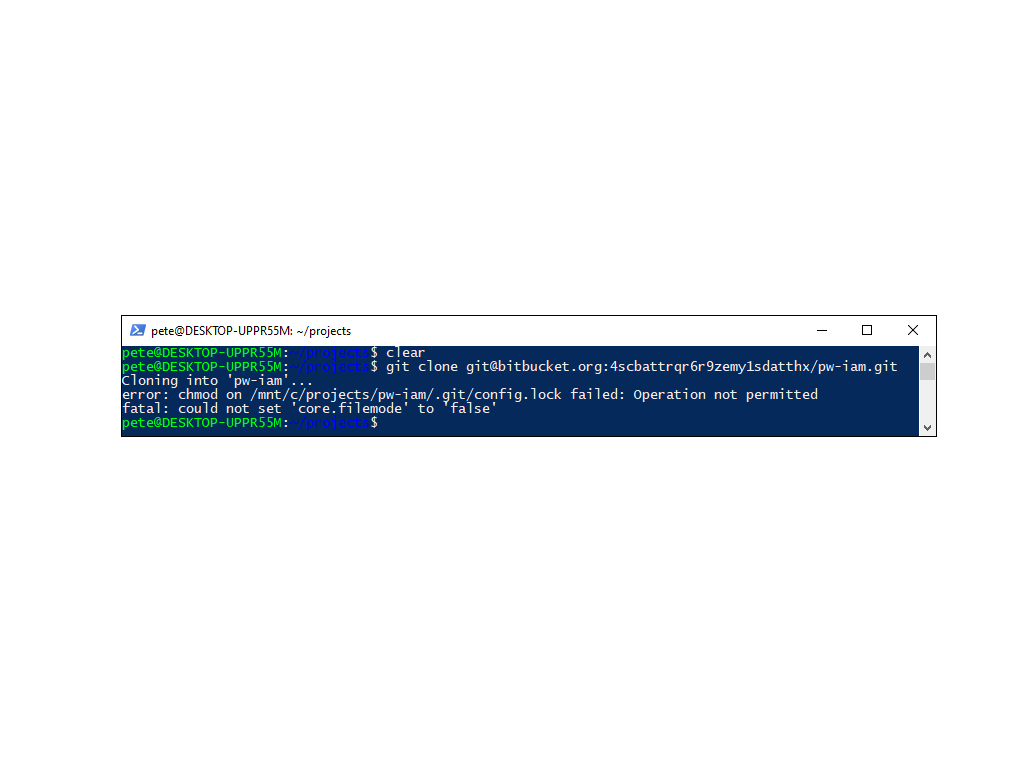


Config Lock Failed Operation Not Permitted Git Peter Whyte



Apply Chmod To A Folder Its Contents Sub Directories Wtmatter
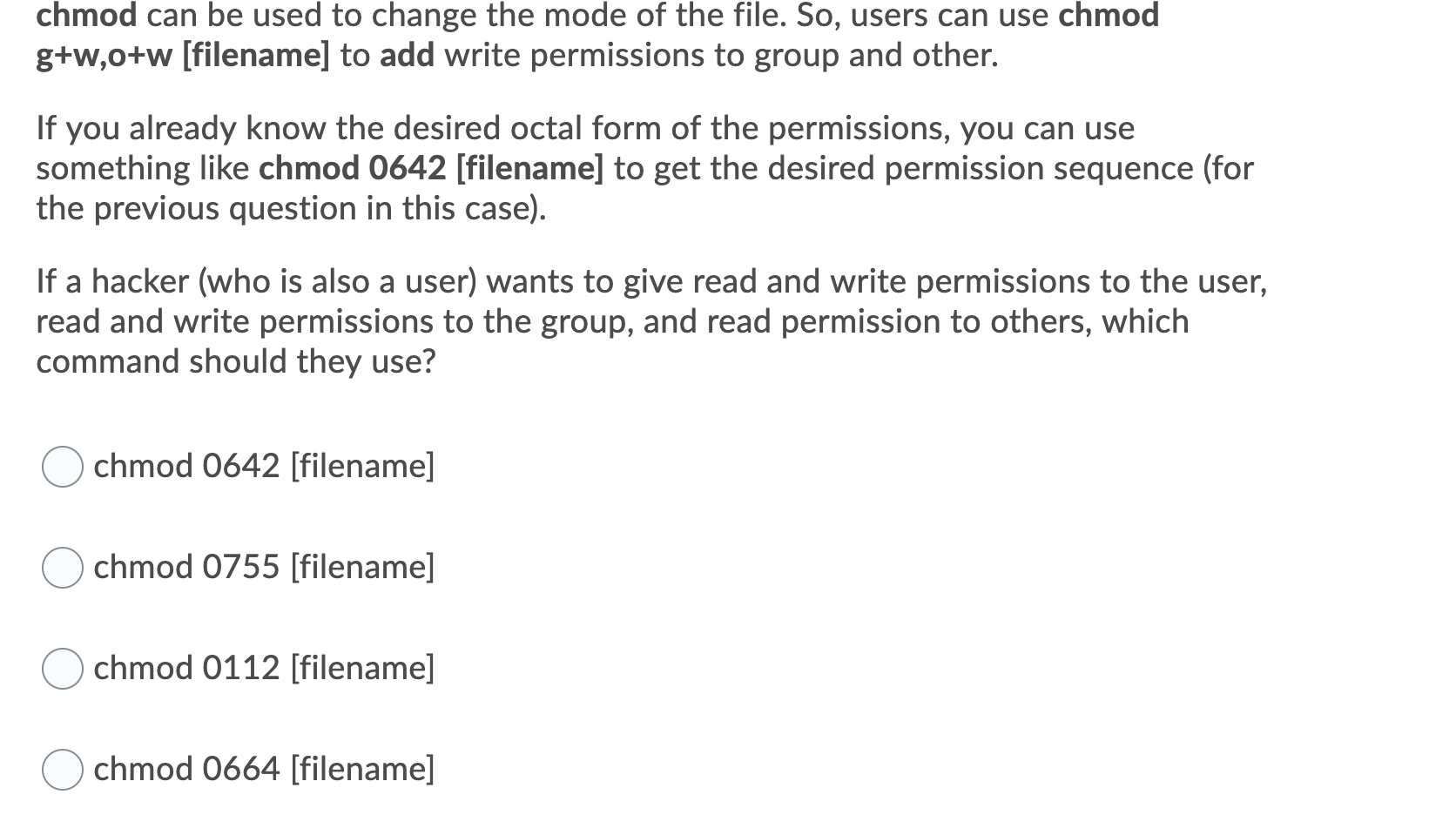


Solved Chmod Can Be Used To Change The Mode Of The File Chegg Com
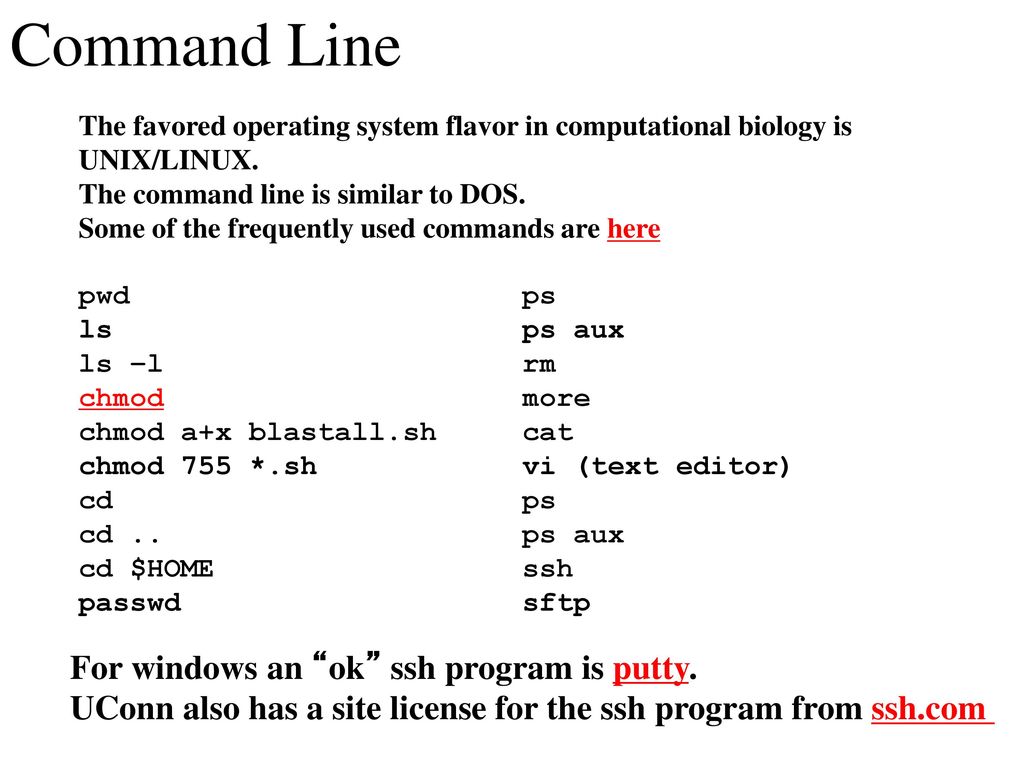


Command Line For Windows An Ok Ssh Program Is Putty Ppt Download



Ppt Agenda Powerpoint Presentation Free Download Id



Chmod 777 Your Mom Laptop Skin By Gengns Redbubble



File And Directory Permissions Chmod Change Owner And Belonging Group Chown Umask Hide Permissions Lsattr Chattr Programmer Sought



Permissions And Executables A Primer For Computational Biology



How To Manage File Permissions On Ubuntu Server 04 Dev Tutorial
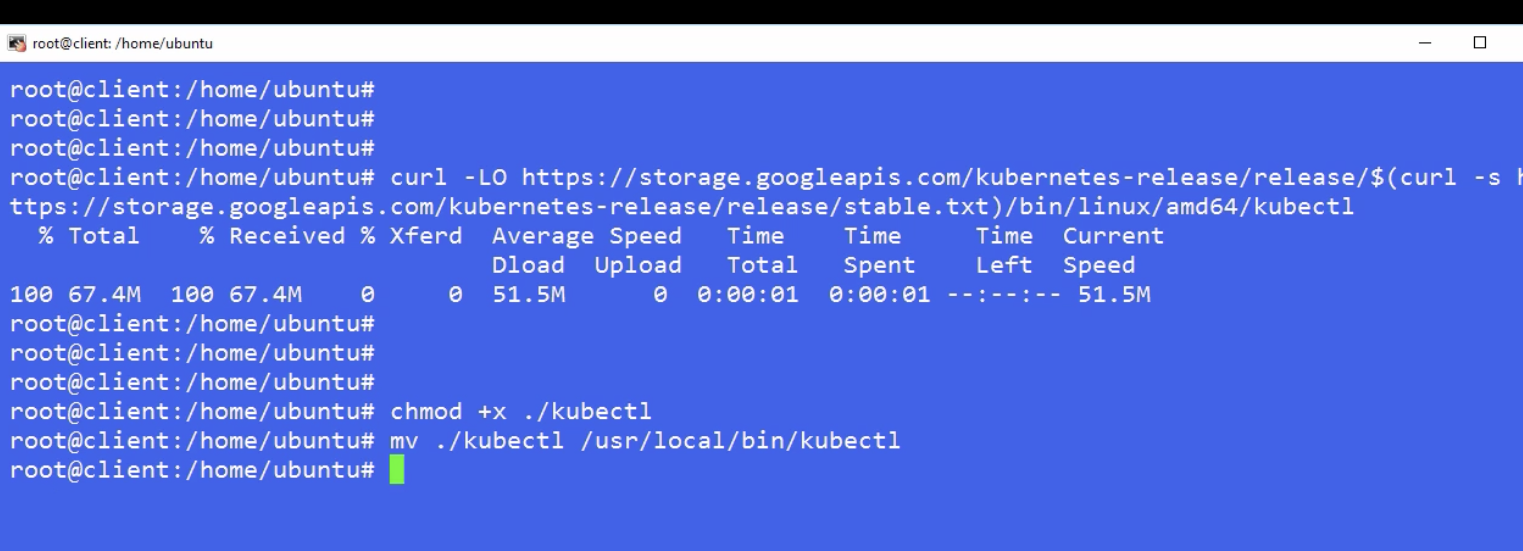


Make Them Executable On Linux Chmod X By Erdem Sahin Medium



Permissions Not Able To Access Folder Due To Wrong Chmod Commands Ask Ubuntu



Chmod Mvps Net Blog Mvps Net Tutorials


Guns Akimbo Chmod 0777 Itsaunixsystem



Pdf Chmod Cheat Sheet Sunny Yiu



Chmod Calculator Takes The Hassle Out Of Directory Permissions Techfruit



The Chmod Command And Linux File Permissions Explained
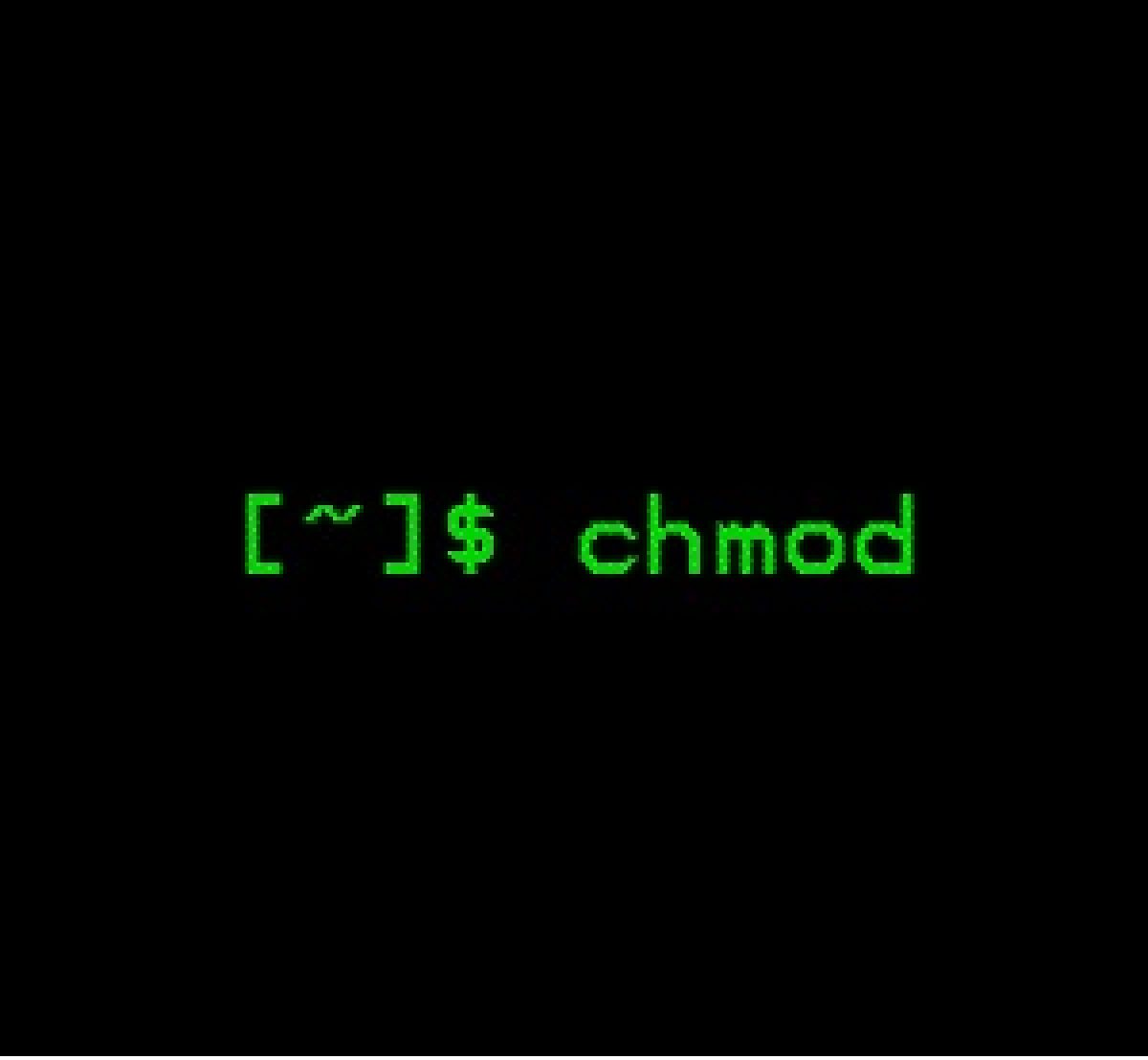


What Is Chmod 777
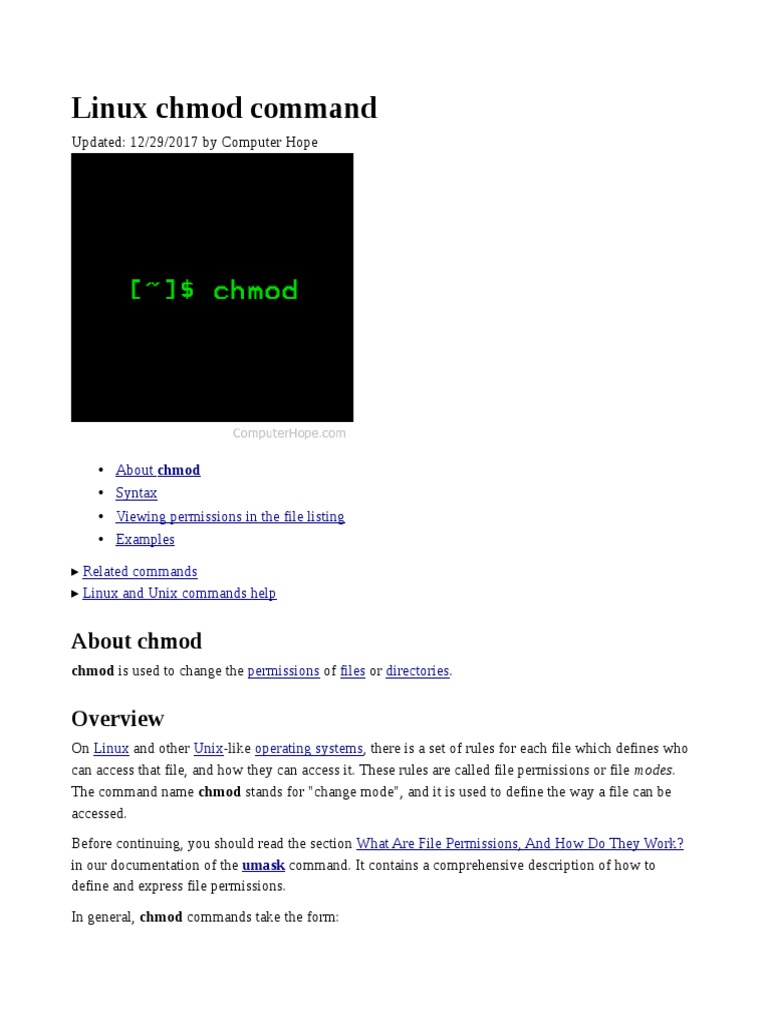


Linux Chmod Command Utility Software Computer File



Directory How Can I Change Permissions Of A Folder Including Its Enclosed Files And Subdirectories Ask Ubuntu


Chmod Calculator Sam Solomon
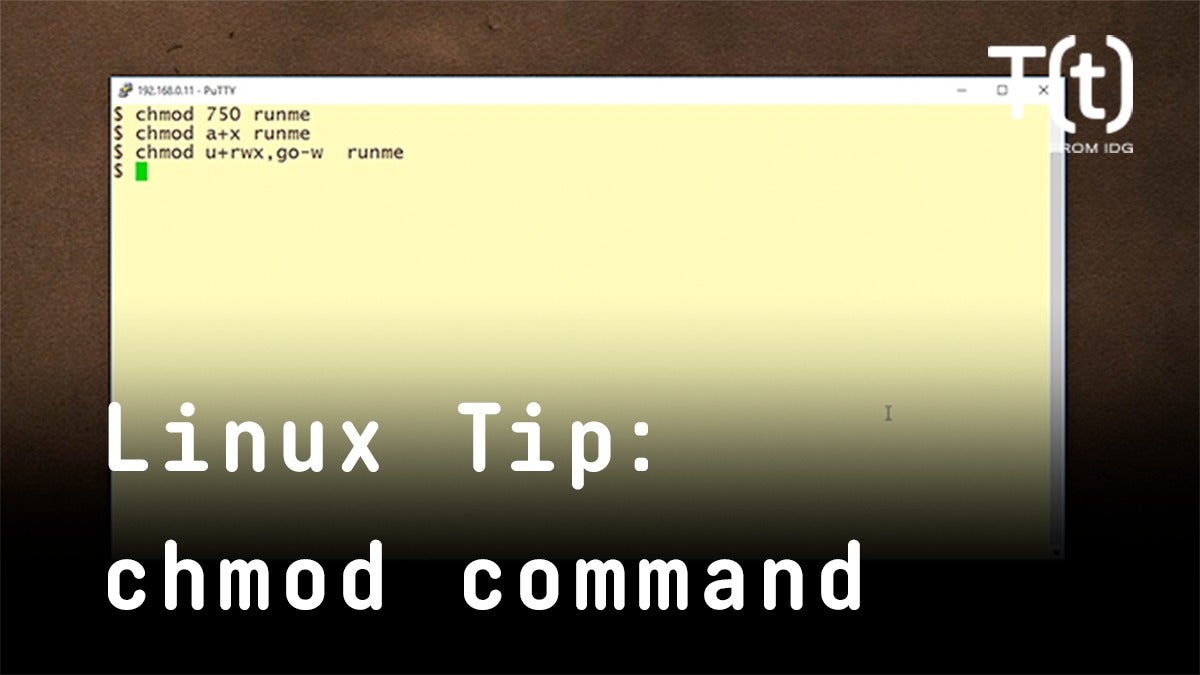


How To Use The Chmod Command 2 Minute Linux Tips Network World
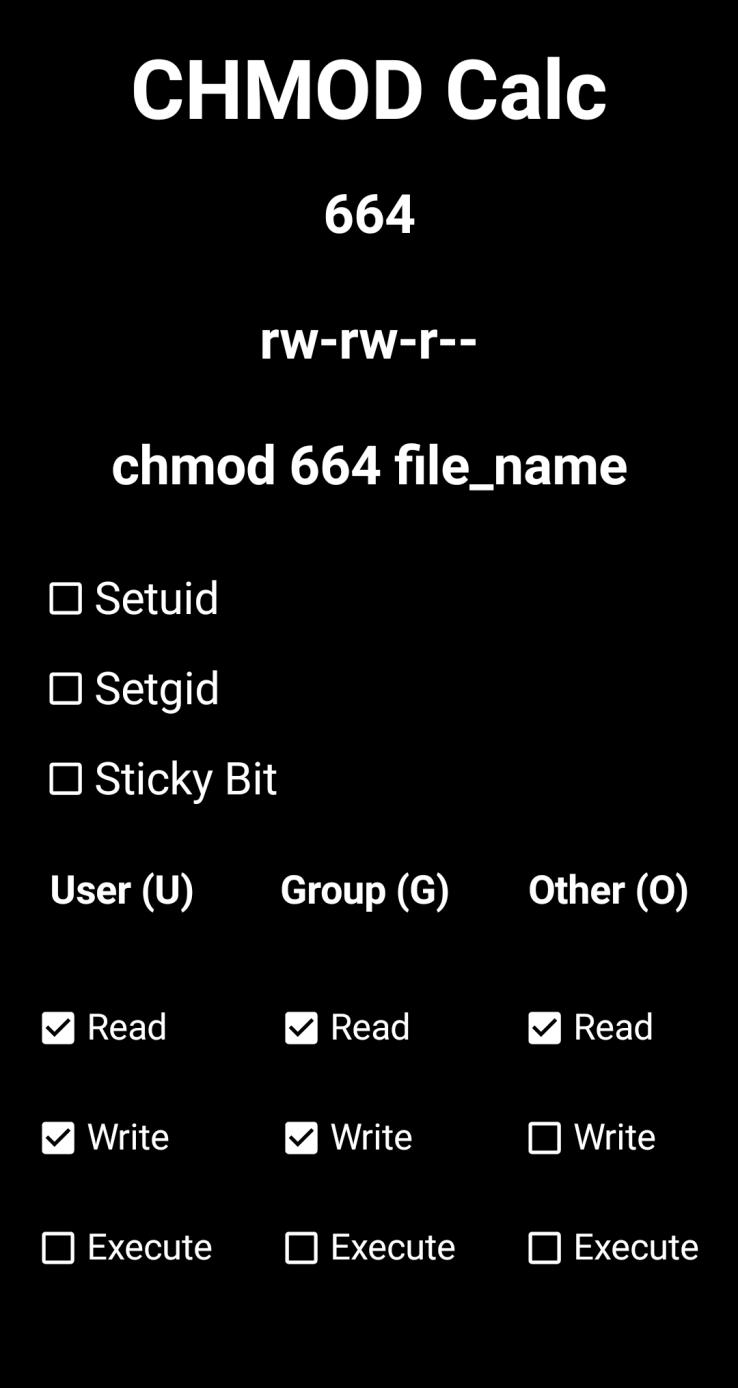


Chmod Calculator For Android Apk Download



Permissions Ul Li Chmod Changes Permissions
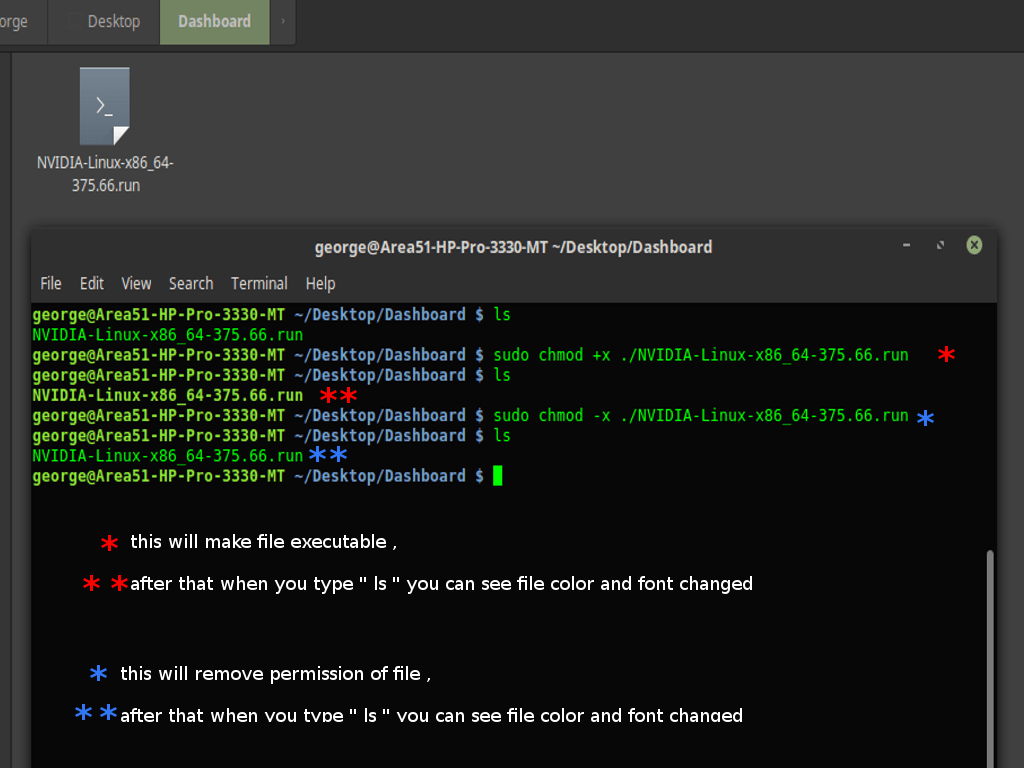


How To Make File Executable Using Terminal Techridez



How To Change Permissions Folder And All Its Subfolders And Files In Linux
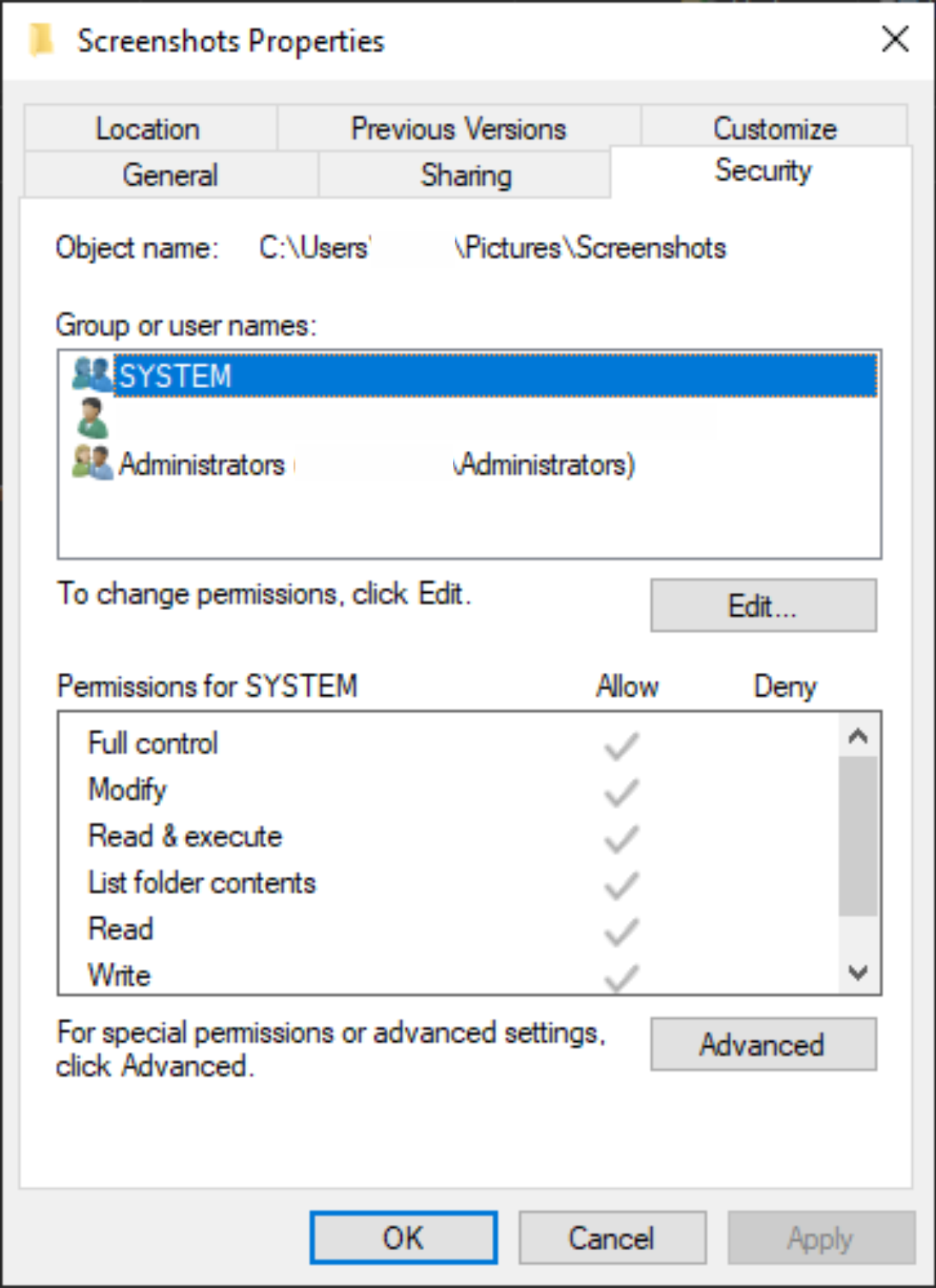


What Is Chmod In Windows



Linux Modify The File Permissions Chmod Programmer Sought


Cifs And Chmod 777 Truenas Community



Sudo Chmod Operation Not Permitted Macrumors Forums



I Created A Script But I Cannot Get The Script To Execute It Tells Me Permission Denied Or That It Cannot Create The Directory S I Thought By Putting Chmod Before The Script



How To Use The Chmod Command In Linux The Wise Bulb


I Made This Chmod Cheat Sheet And Thought It Might Be Useful Linux4noobs



3 Cis 440 Unix Bmcc Studocu
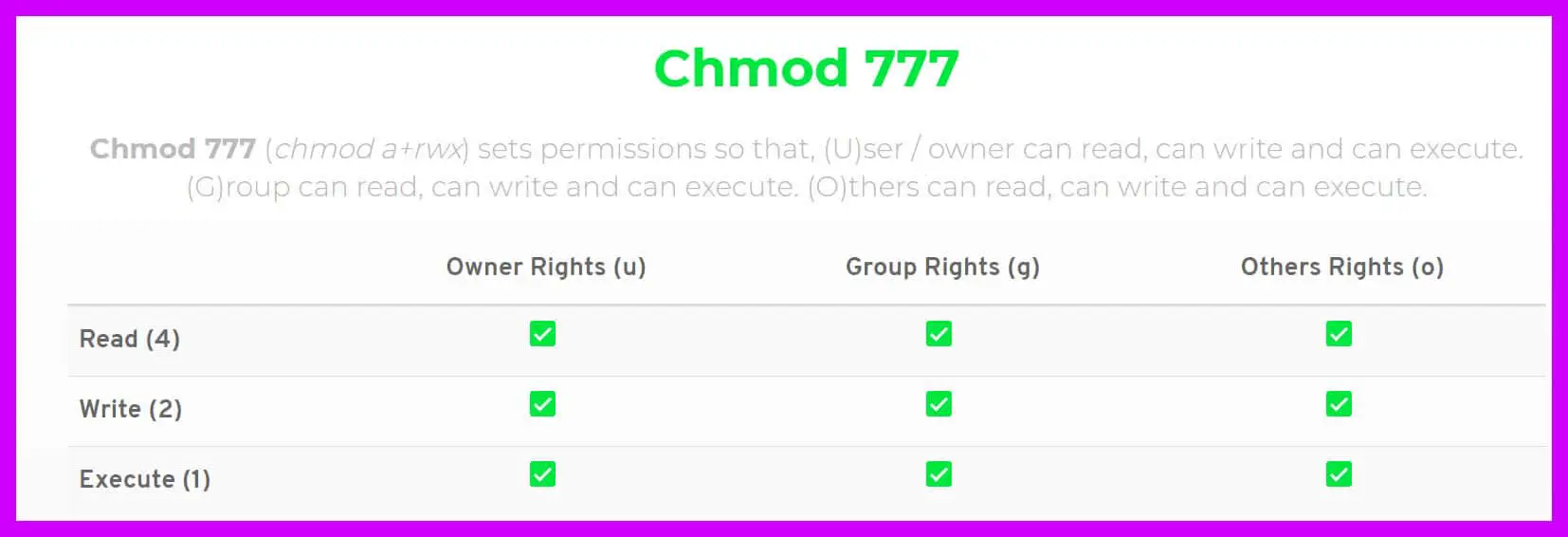


Chmod 777 A Definitive Guide To File Permissions
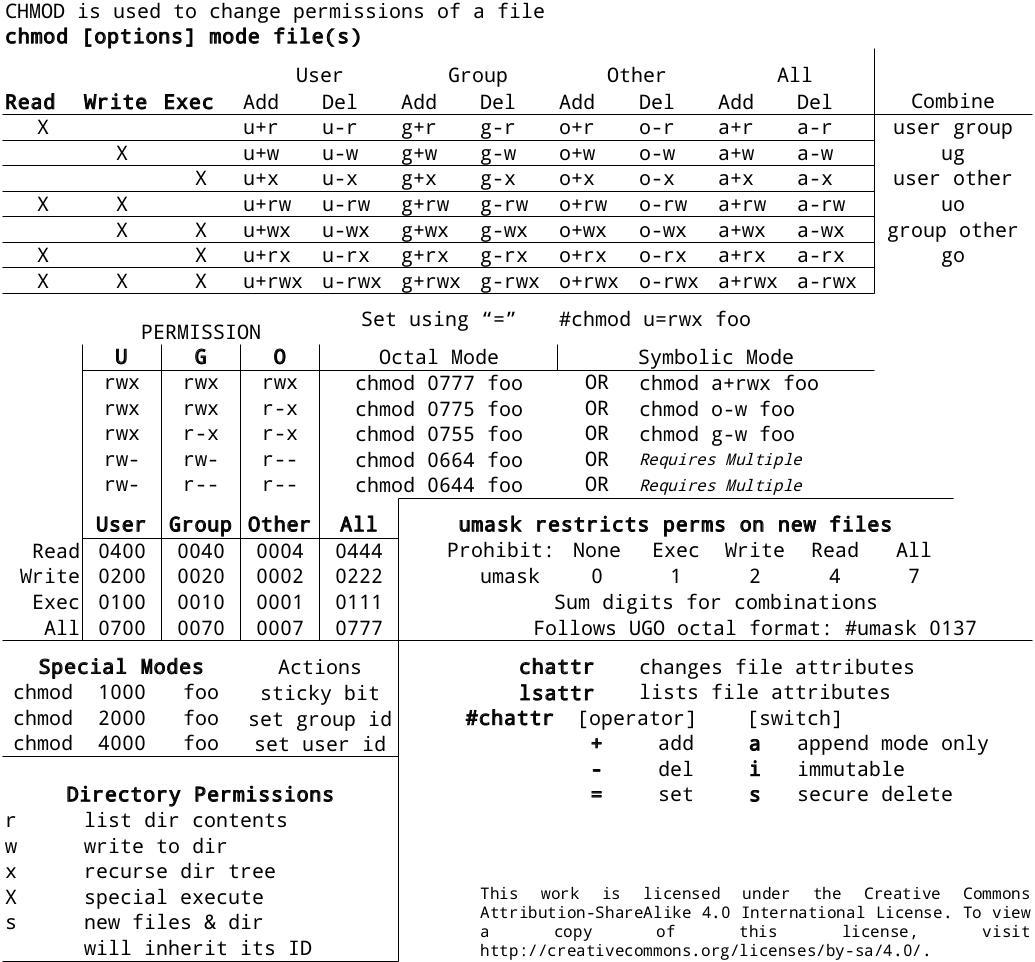


0xax Chmod Cheat Sheet Linux Cli Http T Co B5yd7pk1
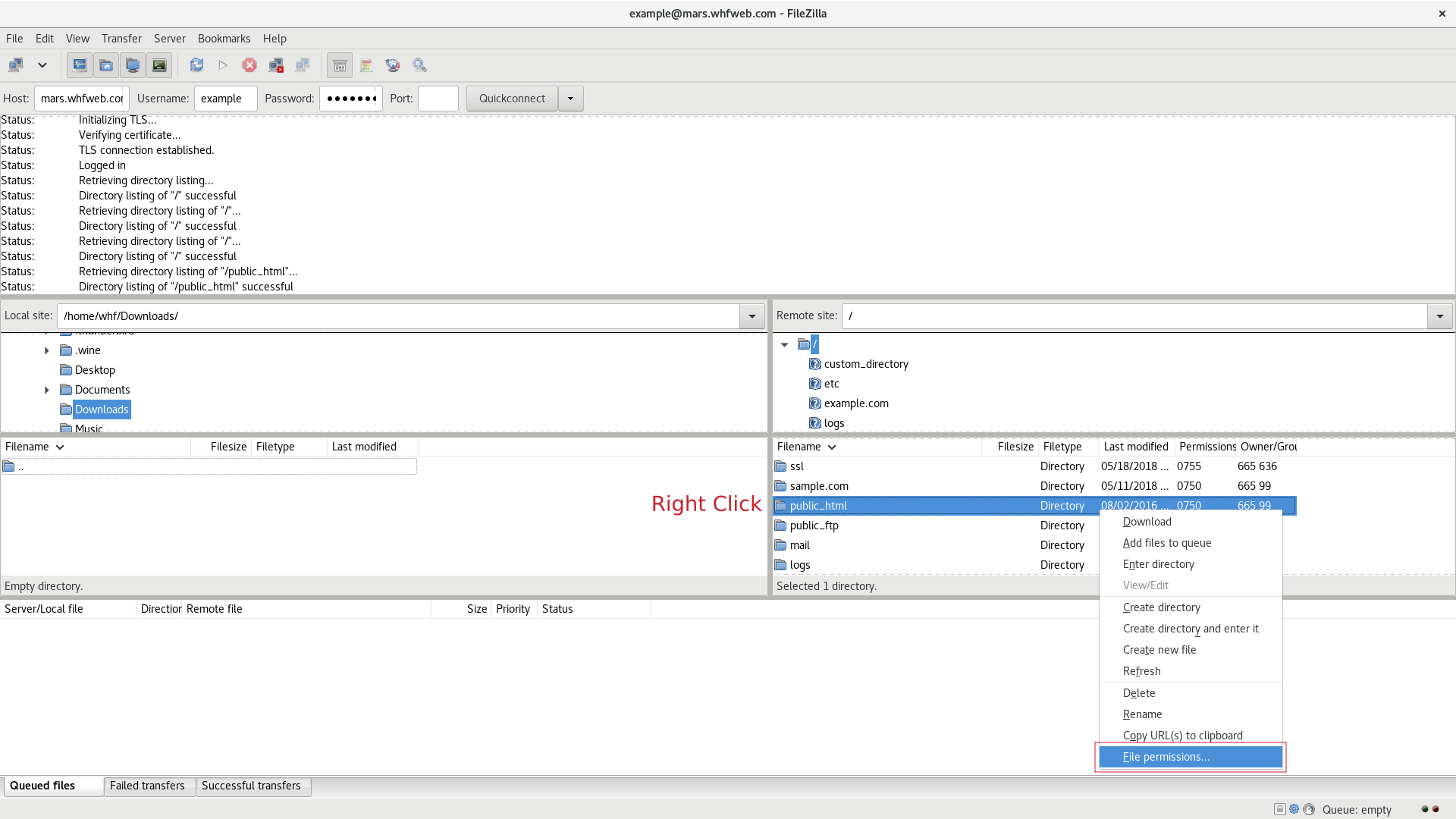


Change Permissions Of Files And Folders In Filezilla In Your Linux Hosting


Hello Gui Help How Do I Give It Permission To Run Chmod 755 Update Hash Sh Tutorials Examples Holochain Forum



Stere0123 Put The R Flag Before The 400 It S Treating It As A File Instead Of A Flag Some Chmod Variants Do Actually Let You Put It After But Not



0 件のコメント:
コメントを投稿